The 2008 Christmas Special of Top Gear, irritating as the programme may be, had drawn our attention to a winding mountain road called the Hải Vân Pass. The mountain pass was superseded by a tunnel a few years ago, meaning the route is quiet, and ideal for scenic mountain road driving.
Due to various Vietnamese laws which I won’t pretend to understand, we weren’t allowed to rent a car, so we asked a taxi to take us over the Hải Vân Pass from Hội An to our next stop, the former French capital, Hue.
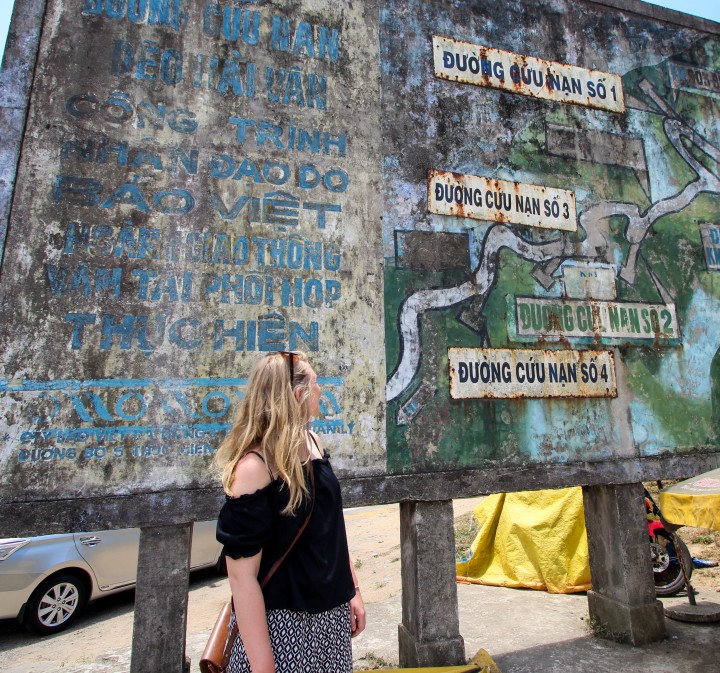
The 21km pass climbs to 3000m over the Trường Sơn mountain range, and provides some pretty panoramic views of the South China Sea. Empty, other than a few tourists, the road winds its way up the steep mountainsides, weaving between peaks and along sheer cliffs. Every so often, we stopped and stood at the side of the road, marvelling at the majesty of the landscape. The full Vietnamese name, “Đèo Hải Vân”, translates as Ocean Cloud Pass. I couldn’t have imagined a better name for such a beautiful road.
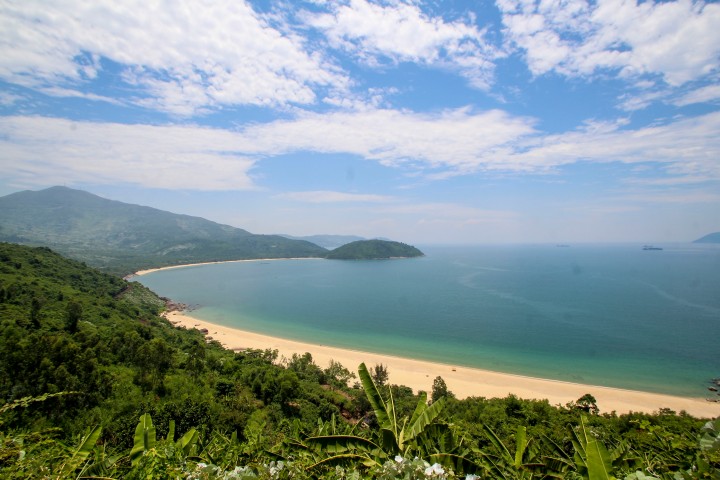
Eventually the road drops down to the Lang Co lagoon, an expanse of brilliant white sand and clear water, broken only by little fishing boats dotted across the bay which our taxi driver claimed, via a dodgy translation app, is possible to cross on foot during low tide. The water here is full of mussels, oysters and clams, and it’s an absolutely stunning sight. That is, except for one thing. Just out of shot is a whopping great concrete flyover, part of the new mountain tunnel road, which gives the lagoon an unfortunate Hammersmith vibe. Vietnam still has a little way to go with planning permission.

Eventually we arrived in our destination, Huế. Pronounced ‘hway’, the city sits on the Perfume River, and used to be the capital of Vietnam and home of the Nguyễn dynasty emperors.
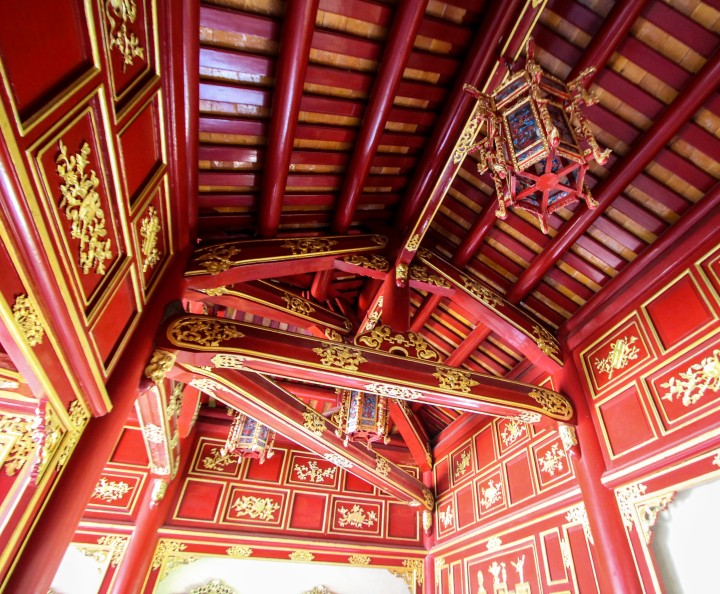
The emperors lived in the Imperial City, a vast complex of temples and houses surrounded by towering walls and deep moats, right in the middle of Huế. It was lived in by the Nguyễn dynasty until 1945, so much of the City remains as it would have been then.

Trouble is, after a few temples, I reckon you’ve seen them all. Every emperor seemed to have a separate temple and/or house, each marginally more ornate than the next. They also seemed to have supplied housing for various family members, so Nicola and I spending a good twenty minutes traipsing around houses with names like Viện Dưỡng Tâm, where the fourteenth emperor’s brother-in-law lived. I wasn’t convinced. My favourite areas of the Imperial City were on the edges, where there were quieter, smaller temples, dotted with ponds full of koi carp, and a few gardens which offered some solitude, a few fortified walls away from the chaotic city.
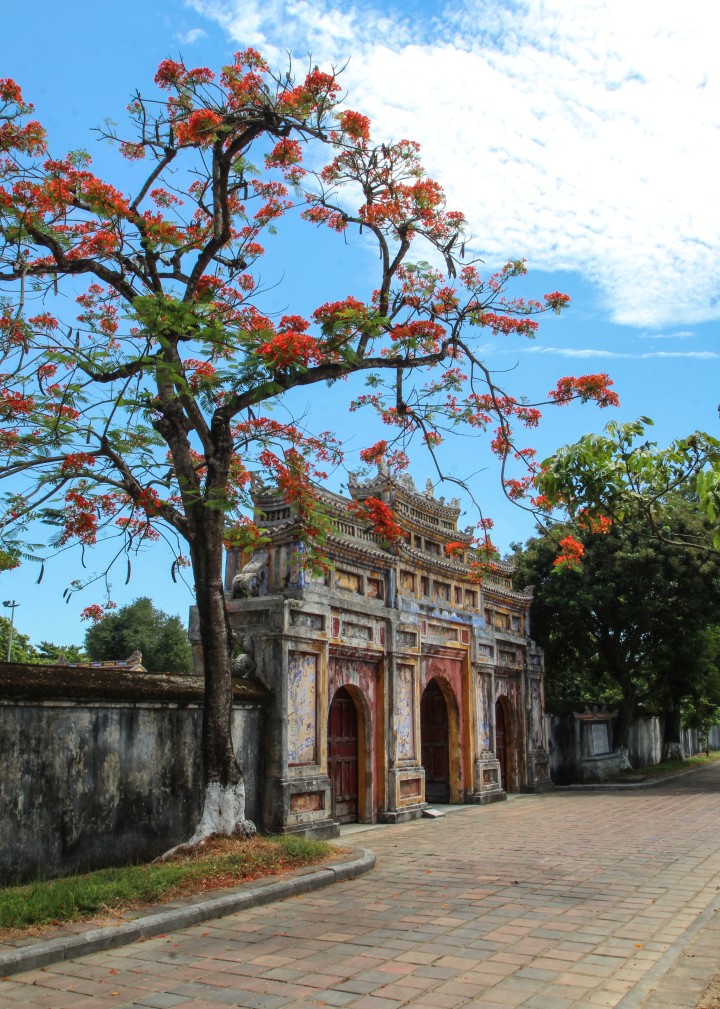

We were in money-saving mode, so we opted to stay at the HueNino Hotel on the east of town. Working out at about £6 per person per night, it was surprisingly good, with a comfy bed and an air conditioned room. The clear highlight, however, was the myna bird who lived in the window of the hotel. And I mean ‘in the window’; his cage was sandwiched between two panes of glass in some sort of aquarium-cage setup. But he seemed perfectly content, and every morning he would watch us carefully as we left the hotel. He also seemed to have a better grasp of Vietnamese than we did, which is disappointing. We’d bought a phrase book and everything.
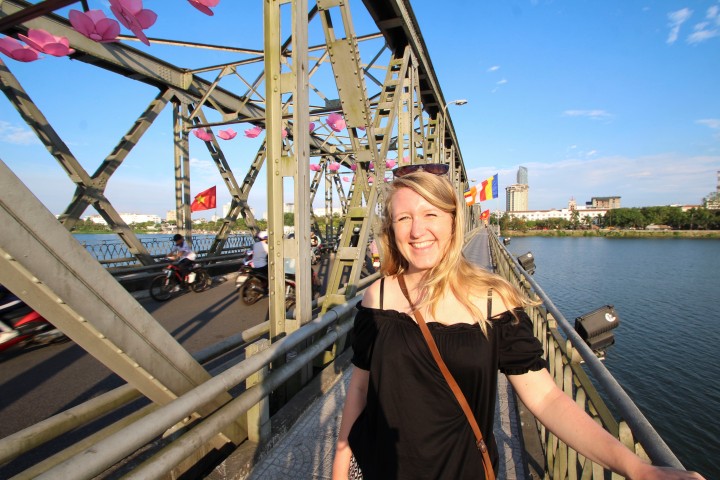
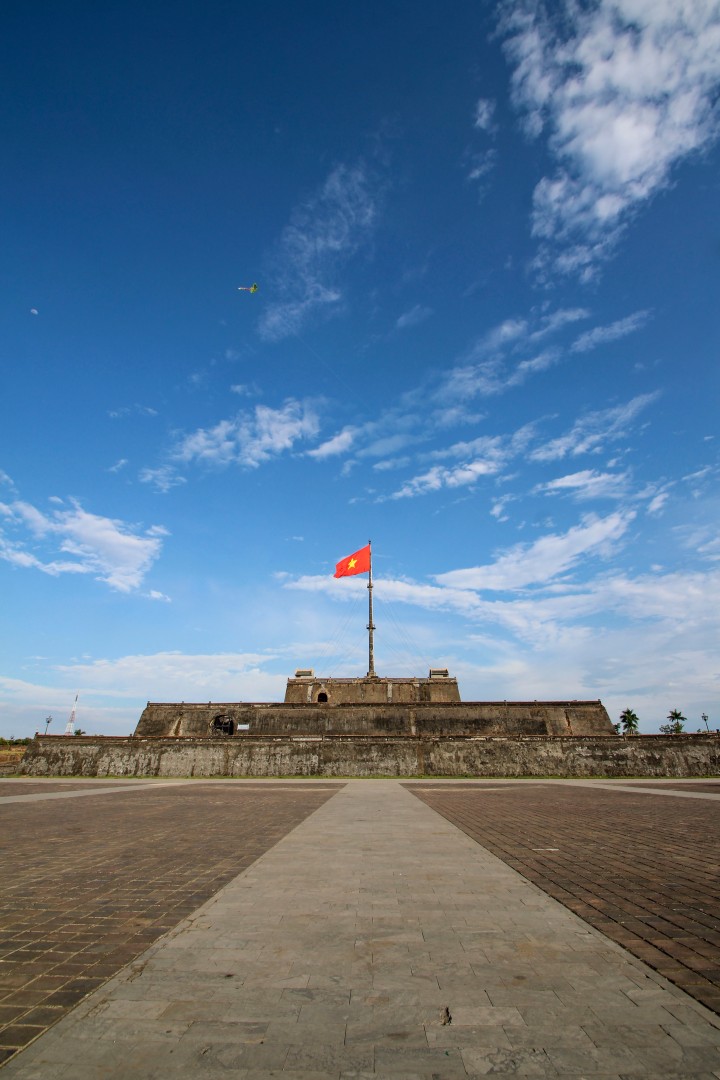

On our last day in Huế, having had our fill of temples, we headed to the tomb of Khải Định, a former emperor, who died surprisingly recently. When my grandparents were running around and playing in the garden in leafy Surrey, Khải Định was cracking on with the plans for his mausoleum. He seemed like a fairly dislikeable chap, raising taxes for the local Vietnamese people, resulting in starvation for many, in order to fund his tomb.

Aside from the questionable crowdfunding campaign, it’s a brilliant tomb. Hundreds of stone steps laid in the hill take you to a grand marble building, flanked by massive statues of dragons. Here lies Khải Định’s coffin, surrounded by opulent gold-leaf walls, intricate porcelain decorations and a few sizeable models of horses. To top it all off, there’s also a statue of Khải Định himself. Interesting bloke.
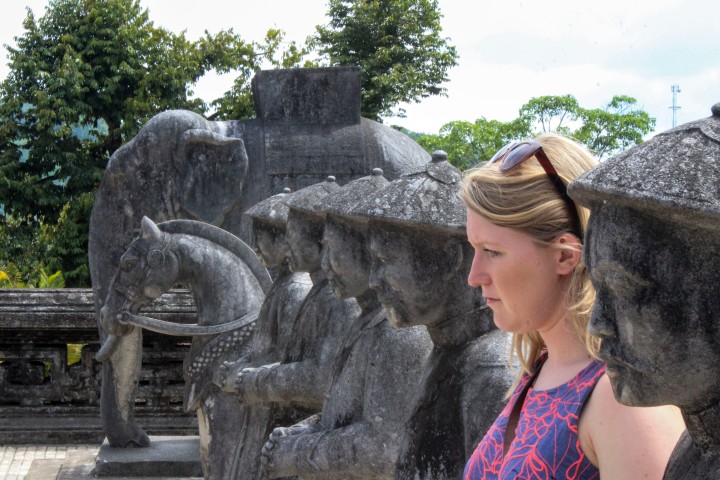
On the way back from the tomb we took a minor diversion into an abandoned water park which Nicola had seen on a blog. The story goes that the water park opened in 2006, but was so poorly staffed and run that within the first year, several people drowned. As a result, the park was mothballed. We snuck in via a crafty back route and had a wander around. It’s certainly a creepy place. Nature hasn’t taken long to reclaim the area, and every path is cracked, with tall weeds sprouting through the concrete. The centrepiece of the water park is a huge concrete dragon, multiple storeys high. Now frequented by graffiti artists, the dragon sits forlorn and neglected in the middle of the lake. After taking a few photos and marvelling at the creepiness of the whole place, and well aware of the rumours of crocodiles that remained when the park closed, we retreated back to civilisation.

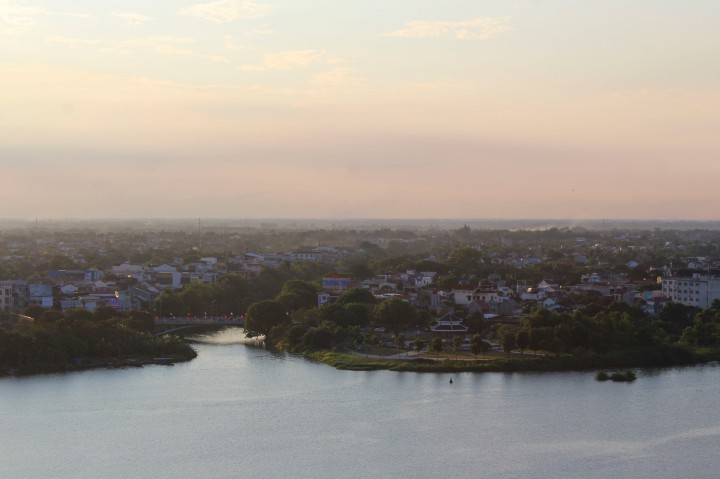
Sunsets in Vietnam are always impressive, but those over the Perfume River in Huế were difficult to beat. On our final night in the imperial city, we found a little bar called Cà Phê Tre Ngà down a tiny back street, ordered a couple of cold local beers, and sat playing cards and watching dusk set in. As the sun lingered on the horizon, silhouettes of mopeds and bicycles crossed the bridge between us and the horizon, creating a brief eclipse with every pass.

Next stop, Phong Nha-Kẻ Bàng.
We stayed at: HueNino Hotel (hueninohotel.com)
We saw far too many temples at: The Imperial City (vietnamonline.com)
We watched the sun setting from: Cà Phê Tre Ngà (lonelyplanet.com)
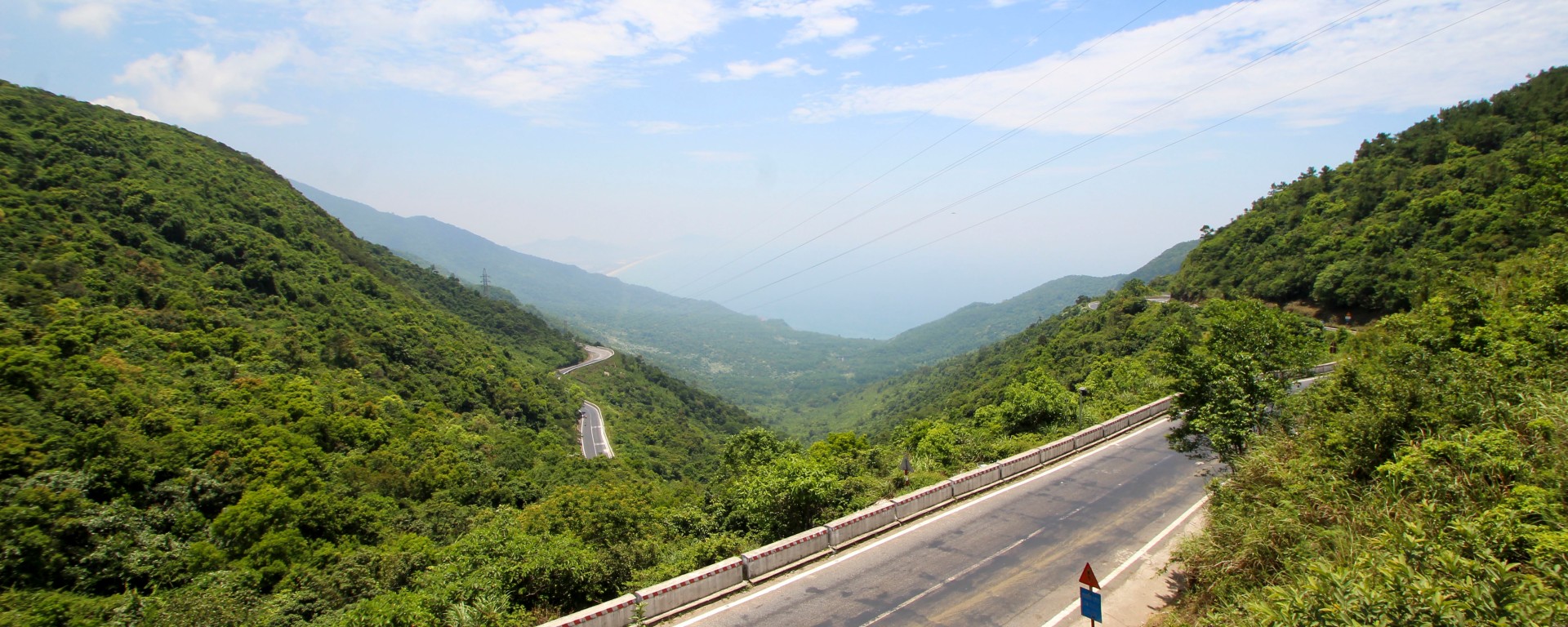
Lovely stuff. Brings back some great memories.
LikeLike
I didn’t realise you’d been too. Now reading (and chuckling) my way through your trip around Indochine.
LikeLiked by 1 person
Great photography!
LikeLike